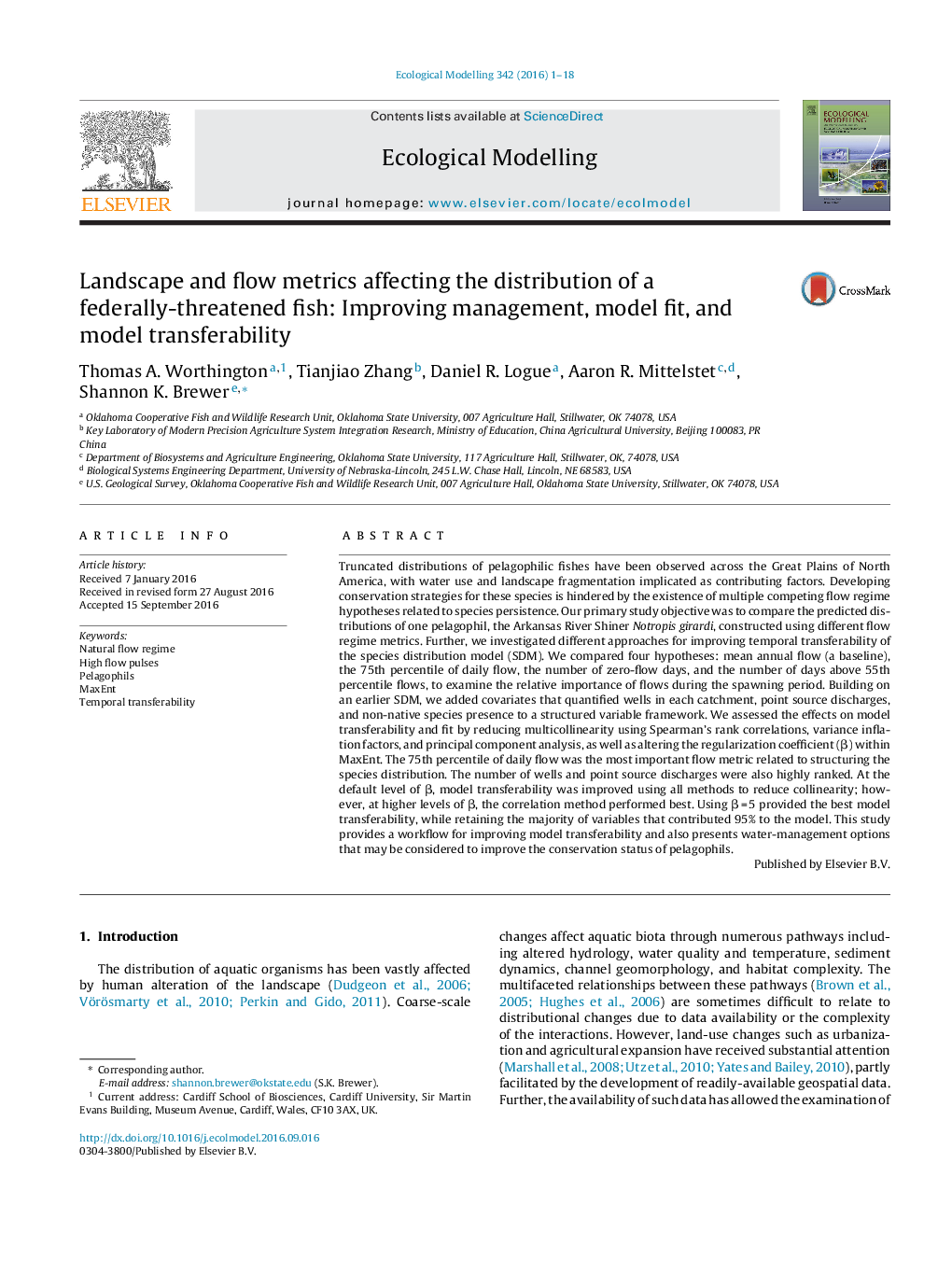| Article ID | Journal | Published Year | Pages | File Type |
|---|---|---|---|---|
| 4375490 | Ecological Modelling | 2016 | 18 Pages |
•High flow during the spawning period was the most supported flow metric.•Model transferability improved by reducing collinearity using any of the approaches.•At higher levels of β, the correlation method performed best for improving model transferability.•Model transferability was greatest at β = 5.
Truncated distributions of pelagophilic fishes have been observed across the Great Plains of North America, with water use and landscape fragmentation implicated as contributing factors. Developing conservation strategies for these species is hindered by the existence of multiple competing flow regime hypotheses related to species persistence. Our primary study objective was to compare the predicted distributions of one pelagophil, the Arkansas River Shiner Notropis girardi, constructed using different flow regime metrics. Further, we investigated different approaches for improving temporal transferability of the species distribution model (SDM). We compared four hypotheses: mean annual flow (a baseline), the 75th percentile of daily flow, the number of zero-flow days, and the number of days above 55th percentile flows, to examine the relative importance of flows during the spawning period. Building on an earlier SDM, we added covariates that quantified wells in each catchment, point source discharges, and non-native species presence to a structured variable framework. We assessed the effects on model transferability and fit by reducing multicollinearity using Spearman’s rank correlations, variance inflation factors, and principal component analysis, as well as altering the regularization coefficient (β) within MaxEnt. The 75th percentile of daily flow was the most important flow metric related to structuring the species distribution. The number of wells and point source discharges were also highly ranked. At the default level of β, model transferability was improved using all methods to reduce collinearity; however, at higher levels of β, the correlation method performed best. Using β = 5 provided the best model transferability, while retaining the majority of variables that contributed 95% to the model. This study provides a workflow for improving model transferability and also presents water-management options that may be considered to improve the conservation status of pelagophils.
